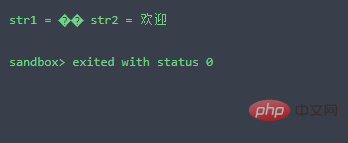How to intercept a string in go language
Interception method: 1. Intercept a single character, the syntax is "string[index]", where "string" represents the source string, and "index" represents the character subscript to be obtained; 2. Intercept a substring, the syntax "string[start : end]", where "start" represents the index of the first character to be intercepted (including this character when intercepting), and "end" represents the index of the last character to be intercepted (excluding this character) ); 3. Get the entire string, syntax "string[:]".

The operating environment of this tutorial: Windows 7 system, GO version 1.18, Dell G3 computer.
String is an immutable sequence of bytes. Strings can contain arbitrary data, but are typically used to contain human-readable text.
During the development process, sometimes we need to obtain a single character in the string, or obtain a certain fragment in the string. At this time, we need to be able to intercept the golang string.
When the string we want to intercept contains a Chinese string, we first need to convert the string into a rune array.
Detailed explanation of character interception in Go language
Grammar
string[index]
Parameters
| Parameters | Description |
|---|---|
| ##string | Source string.|
| index | The character subscript to be obtained.
Note:
The string here represents the string to be intercepted, and index represents the index value. The Go language stipulates that the index of the first character in the string is 0, the index of the second character is 1, and so on for the following characters.Go language interception string detailed explanation
Definition
Go language interception string, also It's called Go language string slicing.Syntax
string[start : end]
Parameters
| Description | |
|---|---|
| string | Source string.|
| start | indicates the index of the first character to be intercepted (this character is included when intercepting). If not specified, it defaults to 0, which means it is intercepted from the beginning of the string.|
| end | indicates the index of the last character to be intercepted (this character is not included when intercepting). If not specified, defaults to the length of the string.





























